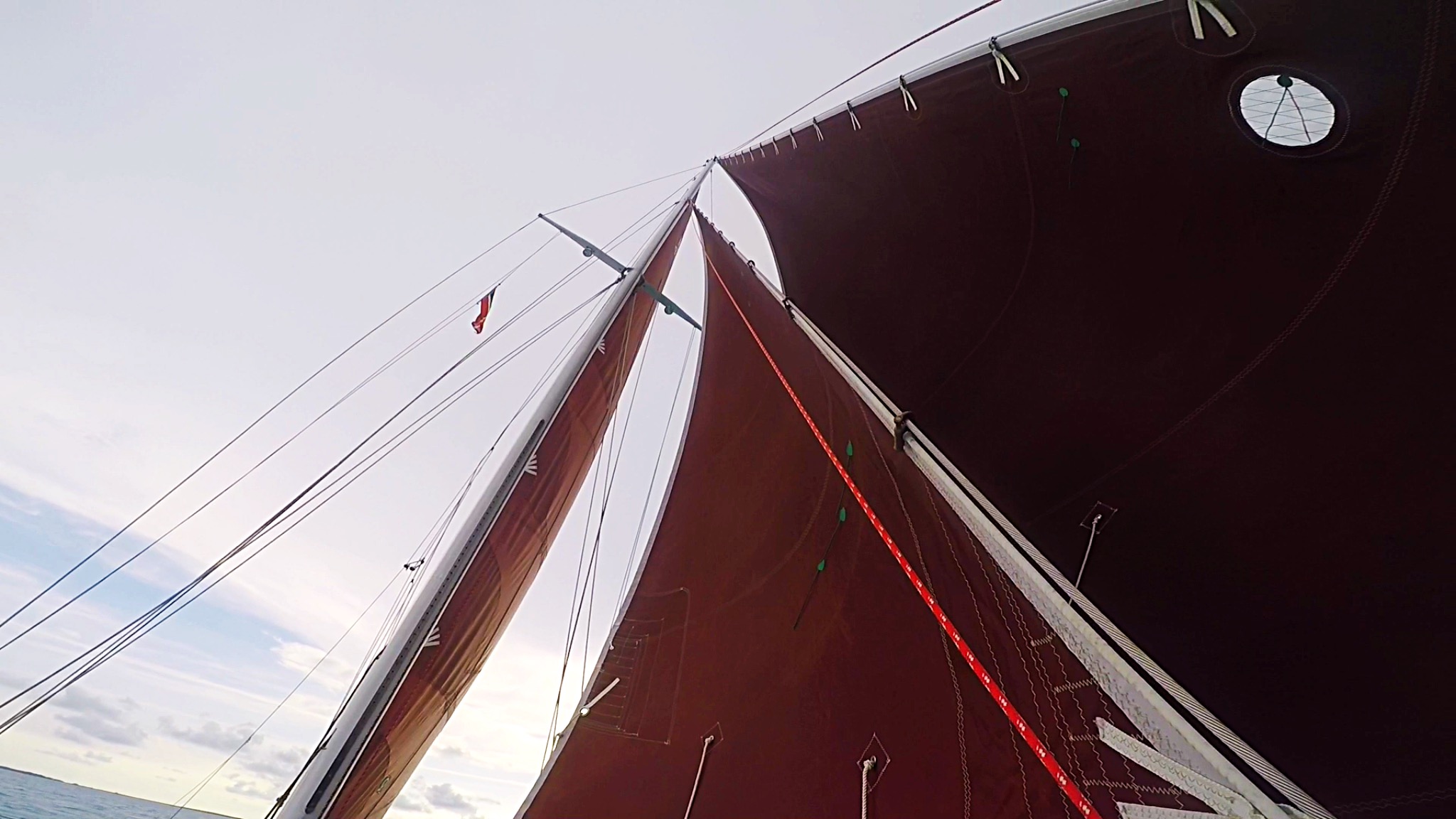Part of reefing is getting the tack cringle onto the tack horn, it’s how you secure the tack of the sail while reefing! How else would you do it?
The struggle with this old method is that the horns can hook and poke holes in the luff of your sail as you raise the sail, and you have to get your tack cringle over the horn in foul weather. When you combine the situation of high winds, a flapping sail, and a pitching deck; suddenly getting a little ring over a little horn doesn’t sound like a fun idea.
Alternatives exist, where a strap with rings on the ends will be sewn through the cringle, so that you can simply place the ring on the strap over the horn, as the strap is easier to manage than the stiff luff of the sail.
All this got me thinking about alternatives to this debacle. What about taking a very strong dyneema line and simply tying the tack in place?
I used a 7mm length of SK-78 dyneema with an alpine butterfly hitch tied in the middle to give the tack line an appropriate purchase point. The line simply passes through the tack webbing, through the bight, back through the tack webbing and back through the bight, then through the webbing one more time to tie off just below the alpine butterfly hitch.
Having a long length of line means that I can reach the tack webbing with ease from a distance, and the purchase system lets me pull the tack down tightly. The dyneema is very strong and able to hold the forces of the sail with ease.
It is imperative that the tack line run down and forward to keep the forces mostly vertical on the luff of the sail. If the tack line does not have a forward component to it’s pull, the luff of the sail will be pulled aft with no countering and it will rip your luff off the luff track.
What we do is tie the tack line, tension the halyard with the winch, then set the clew line for the reef. This way, the clew line is acting on an already tensioned and set tack, resulting in a stable reef setup with zero risk to the sail during sail raising.














